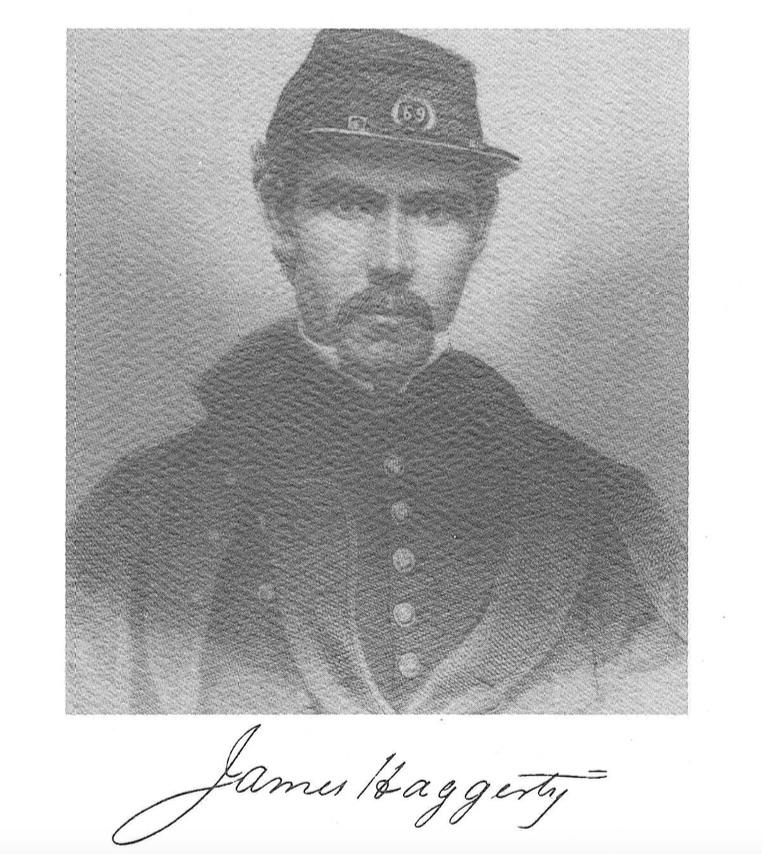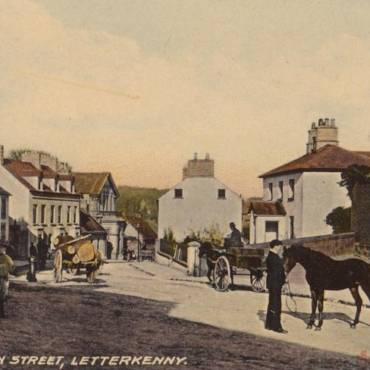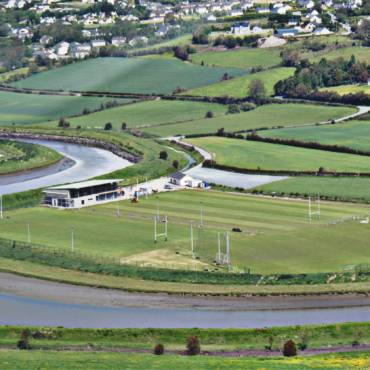The US Civil War & The Man From Glenswilly
In an open plain near the Potamac River in Virginia on July 21st 1861, the Union Forces of Abraham Lincoln came face to face with the Confederate Army under the command of ‘Stonewall’ Jackson in the first major engagement of the Civil War. A little known fact about that decisive battle though is that one of the first casualties was a Captain James Haggerty, who originally hailed from Glenswilly.
Haggerty (most likely originally Hegarty but altered at Ellis Island) was born in 1816 in Glenswilly. In his teens he was an apprentice carpenter, but due to the immense poverty of the time he went to Scotland. By 1849, Haggerty and his brother Bryan decided to emigrate to the United States. In July 1856 Haggerty opened his own business as a house carpenter and builder in New York, located at Bleeker Street between Broadway and Crosby Street.
The 69th Regiment of the New York State Militia was formed on October 12th 1851, primarily as a means of training Irishmen to one day return home and fight for Irish freedom. Haggerty became involved around 1853 with the 75th Regiment, known as the “WolfeTone Volunteers,” and quickly became Captain. Haggerty’s company was attached to the “Republican Rifles” under Colonel Thomas Francis Meagher, the famed 1848 Young Ireland Rebel and designer of the Tricolour Irish Flag. The two men became good friends and they held each other in the highest regard.
On the elevation of Colonel Michael Corcoran, a native of Carrowkeel, Co. Sligo, to the command of the 69th Regiment, Lieutenant Colonel Haggerty became Captain to his former company, with the troop earning the nickname, “Haggerty’s Bullies.”
Then, in early 1861, as the Confederates fired on Fort Sumter, the Civil War began. President Lincoln issued a call to arms on April 15th 1861 for 75,000 volunteers and on April 23rd 1861, amid deafening cheers the 69th Regiment, 1,040 strong with Haggerty amongst them, marched down Broadway and into history.
Bull Run is a 32-mile long tributary of the Potamac River in Virginia. At 11:00 am, on the morning of July 21st 1861, the 69th Regiment, with Haggerty at its head, splashed across the river and upon reaching the crest of the hill, they engaged with the Confederate army in the first major battle of the American Civil War – the First Battle of Bull Run.
In the sporadic and unorganised mêlée that followed, while leading a brave charge against the troops of Stonewall Jackson, Captain James Haggerty made a dash to cut off a runaway Confederate soldier, who immediately turned, raised his gun, and fired point blank at Haggerty, who fell to the ground from his horse and died. Union soldiers soon cut down the gunman in a hail of bullets.
Thomas Francis Meagher, along with four Sergeants, took Haggerty’s body to a farmhouse nearby, placed his sword crosswise on his chest, and left him there. His body was subsequently carried on a farmhouse door to Cub Run, some four miles from the field of battle, where he was temporarily buried and a mattress thrown over the grave along with other soldiers. The Battle of Bull Run ended in a Confederate victory with the Union forces retreating amidst heavy losses.
The following year, at a meeting of the Board of Officers of the 69th Regiment in New York, Captain Theodore Kelly and Lieutenants James M. Canton and John Fahy were chosen to return to the battlefield and bring back the remains of Haggerty. Upon the return of his body, his remains was visited by thousands of people with his burial taking place at Calvary Cemetery in Queens following a large funeral.
Thomas Francis Meagher, the famed Irish Nationalist, had this to say about Captain James Haggerty from Glenswilly:
“On the silent fields which these noble mountains overlook and those deep groves shadow, I see many a strong and gallant soldier of the 69thwhom I knew and loved… Prominent amongst them, strikingly noticeable by reason of his large iron frame, and the boldly chiselled features on which the impress of great strength of will and intellect was softened by a constant play of humor and the goodness and grand simplicity of his heart – wrapped in his rough old overcoat, with his sword crossed upon his breast, his brow boldly uplifted as though he were still in command, and the consciousness of having done his duty sternly to the last animating the Roman face – there lies James Haggerty – a braver soldier than whom the land of Sarsfield and Shields has not produced, and whose name, worked in gold upon the colors of the 69th, should be henceforth guarded with all the jealousy and pride which inspires a regiment, wherever its honor is at stake and its standards are in peril.”
In 1992 the Donegal Association of New York erected a memorial in his honour at the First Calvary Cemetery. Sadly, no such memorial exists (as yet) in his native Glenswilly.



